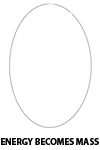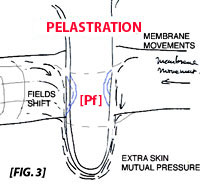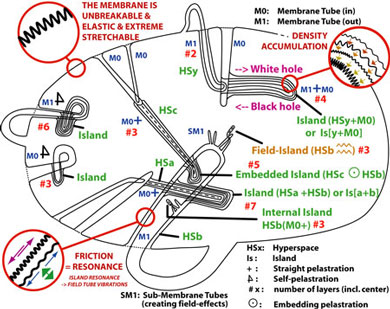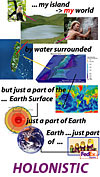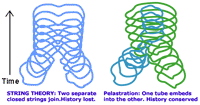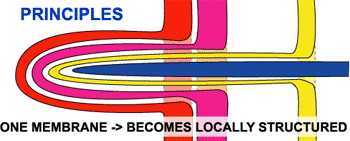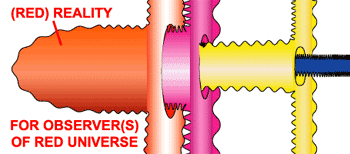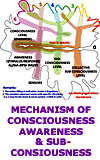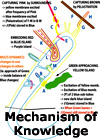|
|||
|
|
|
The Principles of Pelastration
The multi-dimensional Universe consists primary of a giant basic tube or sphere made from a tensegritic membrane. The membrane is unbreakable. The membrane is almost infinite stretchable. The existence such a membrane is the only axioma of this theory. [One can question of course what made this membrane and then there are several speculations such as a type of tricoted single or double filament that is stored behind the membrane. Our goal is limited - for the moment - to show an engineering system that is simple and doesn't need a lot of postulates like QM and hundreds of exclusions.] This membrane is so flexible and elastic that it can infold by a pelastration loop or other types of pelastrations (see image below). This can happen on macro cosmos level as on micro cosmos level. A pelastration will influence locally the tension on the membrane. The giant tube - which is in essence the membrane itself - will restructure itself in many divisions and sub-divisions. We call these divisions: Islands or pellons (pelastrated holons). You can see them also as macro cosmic cigars and micro cosmic cigarillo's. ;-)
Next to that the membrane can create 'locally' also new tiny tubes which will act as membrane tentacles vibrating after the overhaul frequency of that specific island. We can call these outer-island tubes: Field tubes (because they represent the electro-magnetic and radiation fields). Because the layers press upon each other they create 'tension', thus DENSITY. This way the various combinations between energy and matter are explained. The shift between energy and matter happens thus as follows: couple (white hole/pellon of A+B)-> de-couple (Black hole separation A and B) -> re-couple (New white hole/pellon A+X) and/or (new white hole/pellon B+Y). The Big Tube or Membrane sub-divides itself by pelastrations in trillions of other tube-zones and inter- and intra-dimensional tubes. This process of creation can happen simultaneous on the MACRO- and MICRO-cosmic LEVEL. Pelastration is an essential dynamic process to explain the creation of dimensions, matter and energy, motion, etc. and several joining activities, but is not the only process. Sub-tubes (such as the field-tubes) - resulting from the pelastration of several types of tubes - can also coil, knot, etc. with other tubes and provoking changes of conditions. For example by coiling they can create temporary conditions (joined resonance by joined connection) to attract (in fact capture) symbiotic other tubes (compare it with human reproduction). Another type of resonance is however also created by internal friction or over-heating of one or more layers in a tube-zone or the entry of new tubes (e.ge. adding new strings to the piano). The embedding of another 'micro-island' will influence the overhaul frequency.
|
||||||||||||||||||||||||||||||||||||||||||||||||||||||||||||||||||||||||||||||||||||||||
|
© Dirk Laureyssens, 2002/2005. All rights reserved.
Newest developments - See pdf's. Electronic distribution allowed when referred to this website. |



